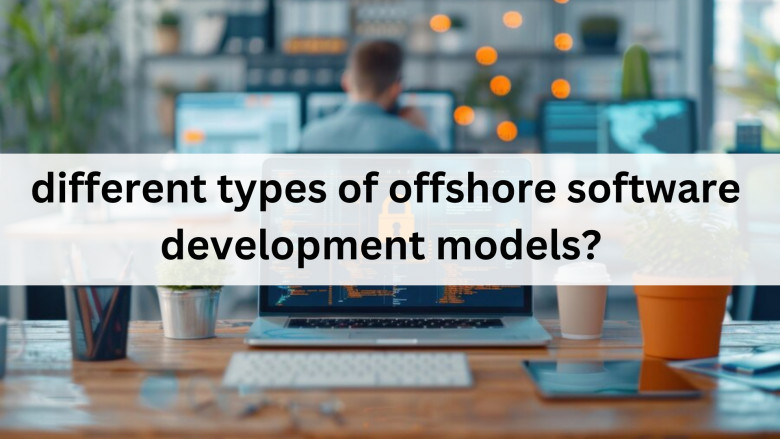views
Businesses stand to benefit from the expertise of different professionals when they outsource software projects to different countries that have lower operational costs. However, there are different models of offshore development, each catering to specific requirements. In this blog, we’ll discuss the most popular offshore software development models, their advantages as well as their disadvantages.
-
Dedicated Offshore Development Team
With this model, companies recruit a group of developers who work solely on their projects but from an offshore location. This model is suitable for long term projects that need sturdy collaboration over longer periods and a reliable team.
Benefits:
Complete Command: The company is in charge of the project and the team directly and manages them as they would in-house employees.
Flexibility: Employees can be added or removed from the team depending on project requirements.
Economical: Huge savings can be made as a result of cheap labor in offshore regions.
Challenges:
Additional Management Expenses: Managing remote workers requires a proficient level of communication skills and leadership capabilities, especially with the added factor of time zones.
Cultural Barriers: Differences in working cultures, styles, communication, and work ethics can cause a multitude of misunderstandings.
- Offshore Development Center (ODC)
This is a business model in which an offshore provider opens a dedicated development center for their customer. It is suitable for clients who wish for continuous support and intend to stay permanently in an offshore location.
Benefits
Full Autonomy: Their personnel, processes and operations are at the company's discretion.
Lower Operational Costs: An Offshore Development Center leads to savings over time.
Long-Term Investment: Ideal for companies who are in a constant need for continuous development support.
Challenges
Initial Investment: Recruitment, infrastructure, and operational expenses associated with an ODC can be quite expensive.
Communication Barriers: There are boundary challenges with other offshore models that has to do with culture, geography and time.
-
Fixed Price Model
A distinct price is set for a deliverable with an agreed set of cost and scope between the client and offshore partner. Predictable projects with strong definitions and specific deliverables normally use this model.
Advantages
Predictable Expenses: It is already known how much the project will cost making budgeting much easier.
Clearly Defined Scope: The clients are in full control of the project capabilities and set tasks needed to be completed.
Obstacles:
Inflexibility: Changes to the project scope might require some level of negotiation, which can be quite time-consuming, and costly.
Underperformance Risk: There is a possibility that the offshore teams will start economizing on services that are rendered to ensure that the fixed budget is met, resulting in a poor-quality outcome.
-
Time and Materials (T&M) Model
The client pays for the hours worked by the offshore development team and the materials that go into the project. T&M is best suited for projects with changing demands and uncertain scope.
Benefits:
Scope Flexibility: Contract alterations necessitated by scope or requirement changes are not needed.
Value for Money: Regular tracking of time and costs offered transparency and ensured that the clients received value for their spending.
Obstacles:
Costs: Unrestricted spending tends to escalate the total to greater than what was originally anticipated.
Close Monitoring: The client is required to actively participate in the project to ensure that it stays within the scope of the budget and timeline.
-
Hybrid Offshore Model
The Hybrid model integrates features of different offshore models strategically to accommodate other requirements that may differ in the various phases of the project. For instance, a business can employ a dedicated offshore team to do the core development and engage a fixed-price model for the smaller, more scoped tasks.
Advantages:
The best of both T&M and fixed-price approaches: The business could utilize T&M's flexibility along with a fixed-price model’s predictability.
Scalability: The company can change between the two models depending on the demands of the project.
Disadvantages:
Management Complexity: Managing several different models at once can be cumbersome and would likely need additional effort to coordinate.
Misalignment Risk: Integration of various offshore models can cause gaps in processes and communication which would negatively affect project results.
-
Staff Augmentation Model
This model is when companies employ single offshore experts (developers, testers, etc.) to supplement their in-house team for the duration of a project. The offshore team integrates with the existing staff to deliver specialized skills or additional manpower.
Advantages:
Affordability: This model is less expensive than paying full-time employees.
Access to Particular Skills: Companies can utilize particular technology skills with staff augmentation without having to hire full employees.
Disadvantages:
Coordination Problems: Integrating remote specialists with an in-house team can lead to coordination gaps and communication challenges.
Less Control: Offshore professionals operate at the client’s command, however, they are not fully embedded within the company’s culture or processes.
Conclusion
Each project has its own requirements such as scope, budget, and degree of control which dictate what model of offshore software development is best suited. If long term partnerships with total control are desired, the Dedicated Offshore Team or Offshore Development Center models would be suitable. For clearly defined projects, the Fixed Price model is most convenient; however, the Time and Materials model is preferable when requirements are not set in stone. Both models can also be utilized under a Hybrid model. Staff Augmentation is employed to give a team additional skills.
If your ideal model is unclear, RSK Business Solutions can help. They are known for custom offshore development strategies, so working with them guarantees alignment with your objectives in the most cost-efficient way.























Comments
0 comment